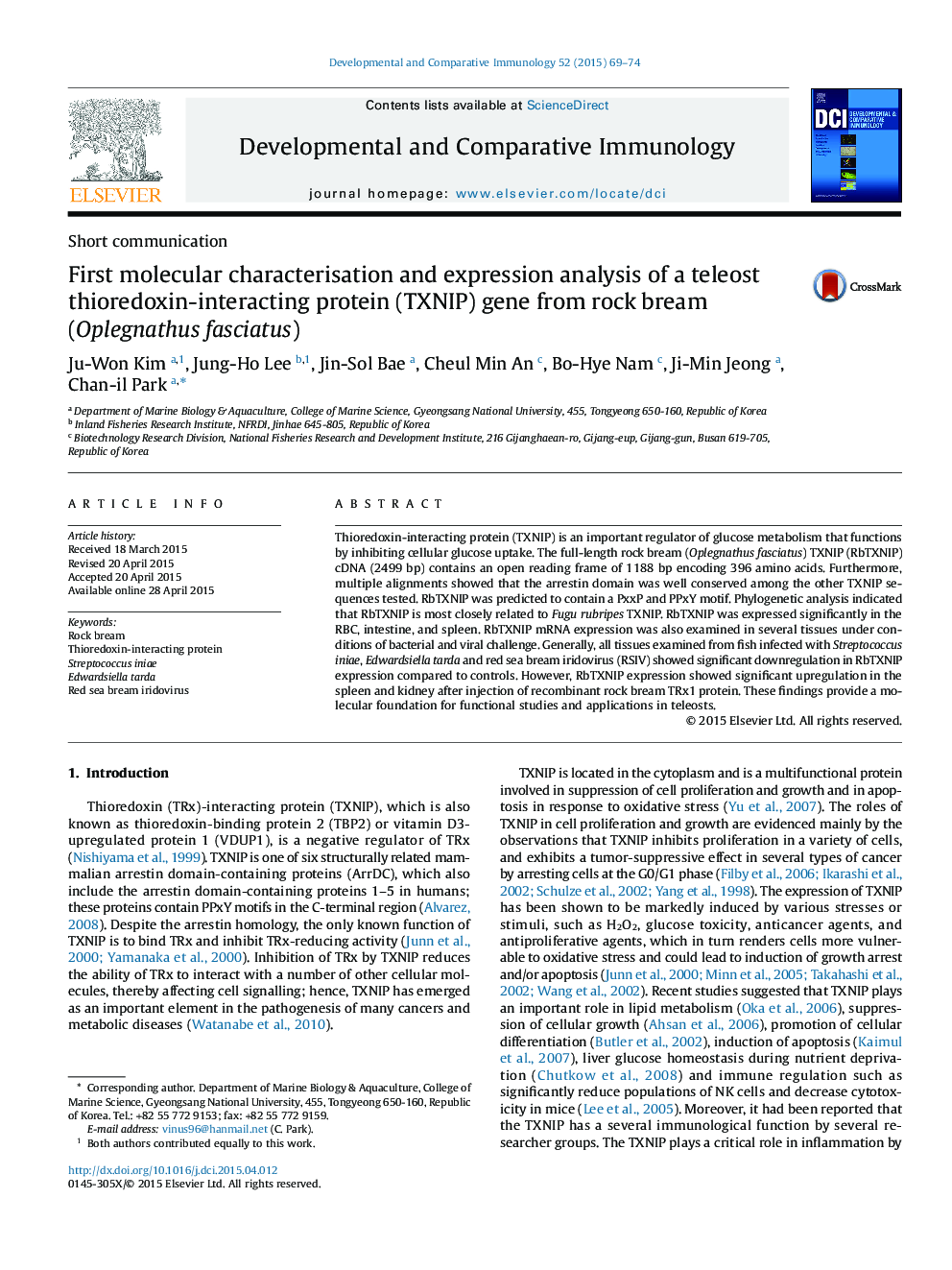| Article ID | Journal | Published Year | Pages | File Type |
|---|---|---|---|---|
| 2428952 | Developmental & Comparative Immunology | 2015 | 6 Pages |
•Thioredoxin-interacting protein cDNA was identified from a rock bream.•RbTXNIP had a well-conserved arrestin domain within the aligned sequence.•RbTXNIP gene was predominantly in the RBC, intestine, and spleen.•RbTXNIP was up-regulated after recombinant TRx1 protein injection.•RbTXNIP was down-regulated in the fish infected with several pathogens.
Thioredoxin-interacting protein (TXNIP) is an important regulator of glucose metabolism that functions by inhibiting cellular glucose uptake. The full-length rock bream (Oplegnathus fasciatus) TXNIP (RbTXNIP) cDNA (2499 bp) contains an open reading frame of 1188 bp encoding 396 amino acids. Furthermore, multiple alignments showed that the arrestin domain was well conserved among the other TXNIP sequences tested. RbTXNIP was predicted to contain a PxxP and PPxY motif. Phylogenetic analysis indicated that RbTXNIP is most closely related to Fugu rubripes TXNIP. RbTXNIP was expressed significantly in the RBC, intestine, and spleen. RbTXNIP mRNA expression was also examined in several tissues under conditions of bacterial and viral challenge. Generally, all tissues examined from fish infected with Streptococcus iniae, Edwardsiella tarda and red sea bream iridovirus (RSIV) showed significant downregulation in RbTXNIP expression compared to controls. However, RbTXNIP expression showed significant upregulation in the spleen and kidney after injection of recombinant rock bream TRx1 protein. These findings provide a molecular foundation for functional studies and applications in teleosts.
